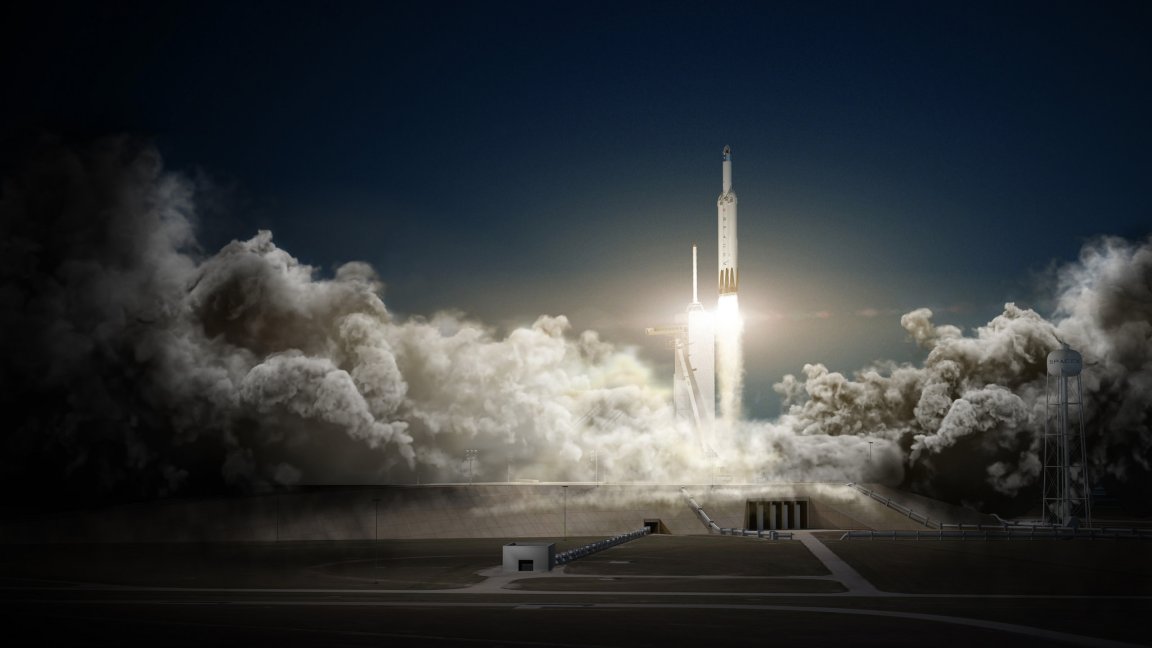
A New Era
Today, February 6, SpaceX successfully launched Falcon Heavy.
At 3:45 p.m. ET, Falcon Heavy took off from Launch Complex 39A at Florida’s Kennedy Space Center. It had successful stage and booster separation, and the two side cores executed a beautifully in sync landing at SpaceX’s Landing Zones 1 and 2.
Unfortunately, it seems the center core did not settle on the company’s “Of Course I Still Love You” drone ship stationed in the Atlantic Ocean as planned. While SpaceX has yet to confirm the loss of the core, in the audio of a SpaceX clip from the launch, a voice can be heard saying, “We lost the center core.”

Falcon Heavy, which is now the world’s most powerful rocket, carried a limited-edition Tesla Roadster as its payload, which will travel in an elliptical orbit around the Sun on its way toward Mars. Yes, seriously.
Don’t let the sports car (complete with spacesuit-clad dummy) playing David Bowie’s “Space Oddity” distract you from the real, concrete achievement here, though. In addition to adding to the issue of space junk in a unique way, the car’s trip toward Mars proves that Falcon Heavy is able to carry impressive payloads far beyond Earth.
Humanity’s Next Stop
Though originally designed to carry people, SpaceX CEO Elon Musk told reporters during a teleconference on February 5 that Falcon Heavy will likely not be used for crewed missions. “It looks like BFR development is moving quickly, and it will not be necessary to qualify Falcon Heavy for crewed spaceflight,” said Musk, according to SpaceNews. “We kind of tabled the Crew Dragon on Falcon Heavy in favor of focusing our energy on BFR.”
However, Musk did note that unexpected delays in BFR development could change that. “We’ll see how the BFR development goes,” he said. “If that ends up taking longer than expected, then we will return to the idea of sending a Crew Dragon on a Falcon Heavy around the Moon and potentially do other things with crew on Falcon Heavy.”
It may or may not be Falcon Heavy, but someday, you or I could travel to Mars aboard a SpaceX craft. Seem like sci-fi? So does the idea of a billionaire entrepreneur sending his personal car into space to test a massive rocket.

Beyond SpaceX, humanity’s options for vehicles to the Moon or Mars are limited. NASA is currently developing the Space Launch System (SLS), which is set to be more powerful than Falcon Heavy and just as capable of ferrying passengers. Current estimates suggest that it will be ready in 2022, but delays are common where massive rockets are concerned.
Overall, Falcon Heavy seems like the clear winner between the two vehicles because it’s less expensive. Heavy launches will only cost $90 million as opposed to the $500 million to $1 billion a SLS launch would run. Given the limitations of NASA’s budget and the current administration’s urgent desire to return to the Moon, SpaceX’s rocket seems to be a compelling alternative for a Mars mission.
Today’s successful Falcon Heavy launch will help SpaceX generate interest in space exploration. That interest could translate to new partnerships and increased funding, which the company will need to support their ambitious work to get humanity to our next stop: Mars.